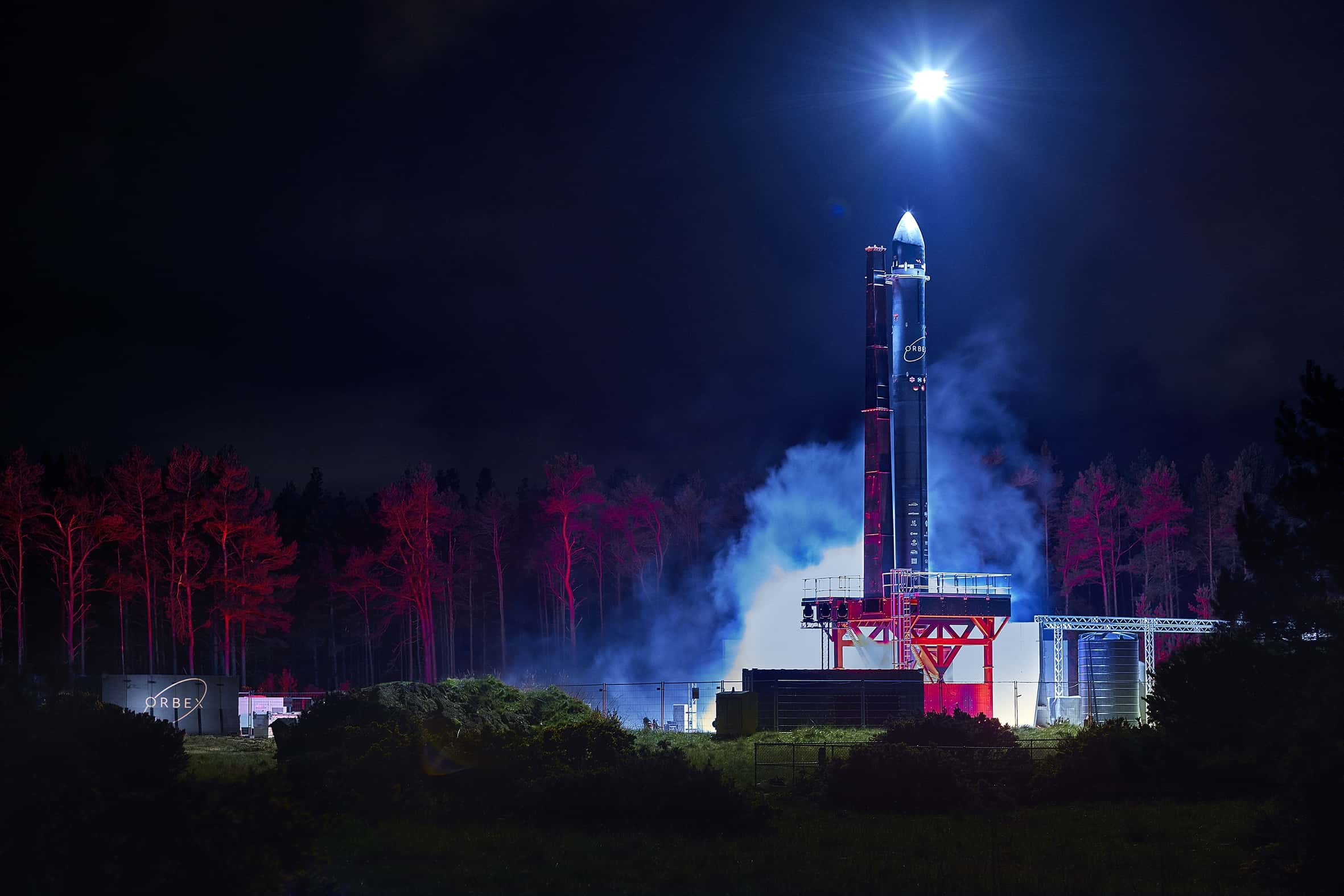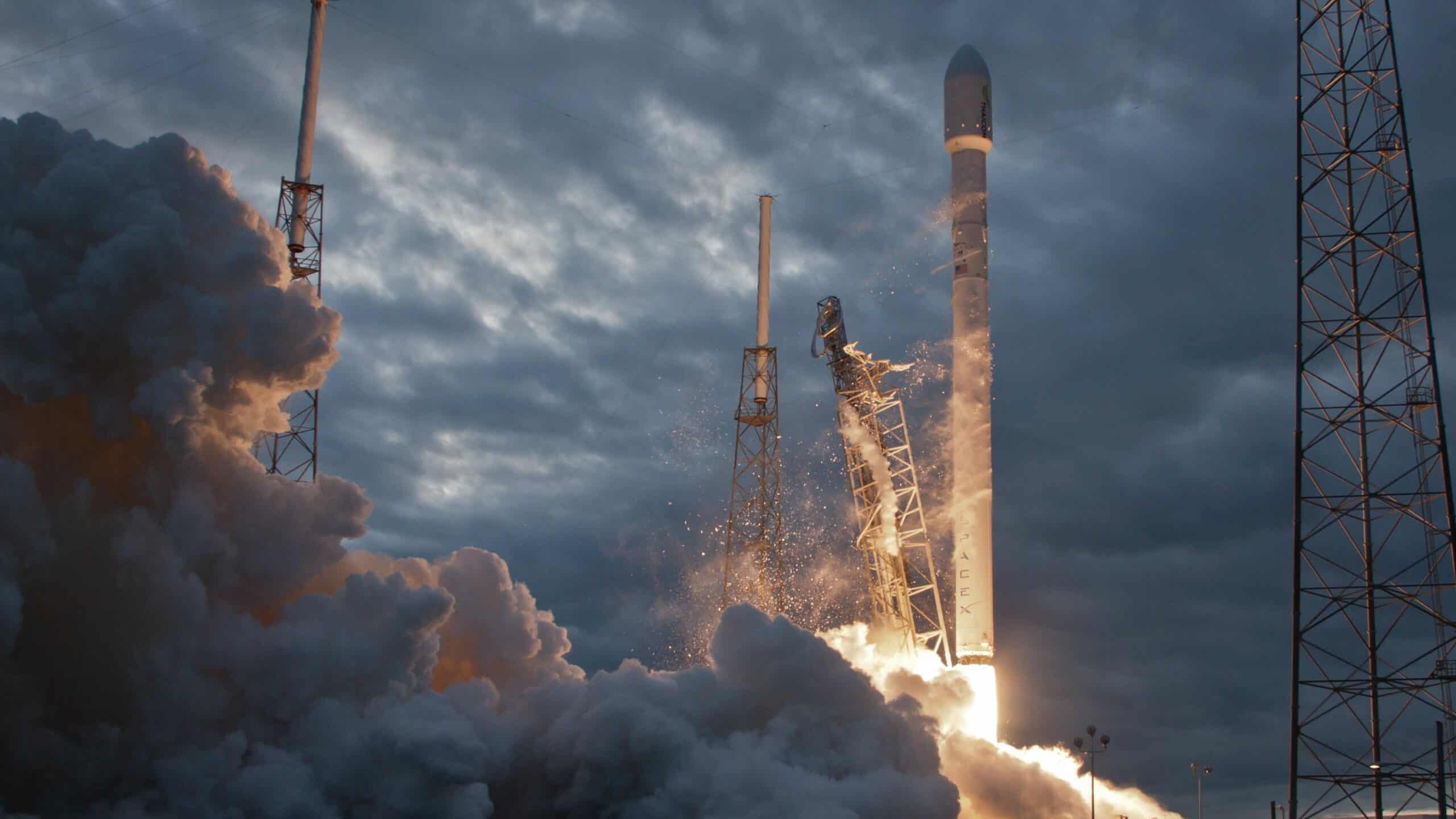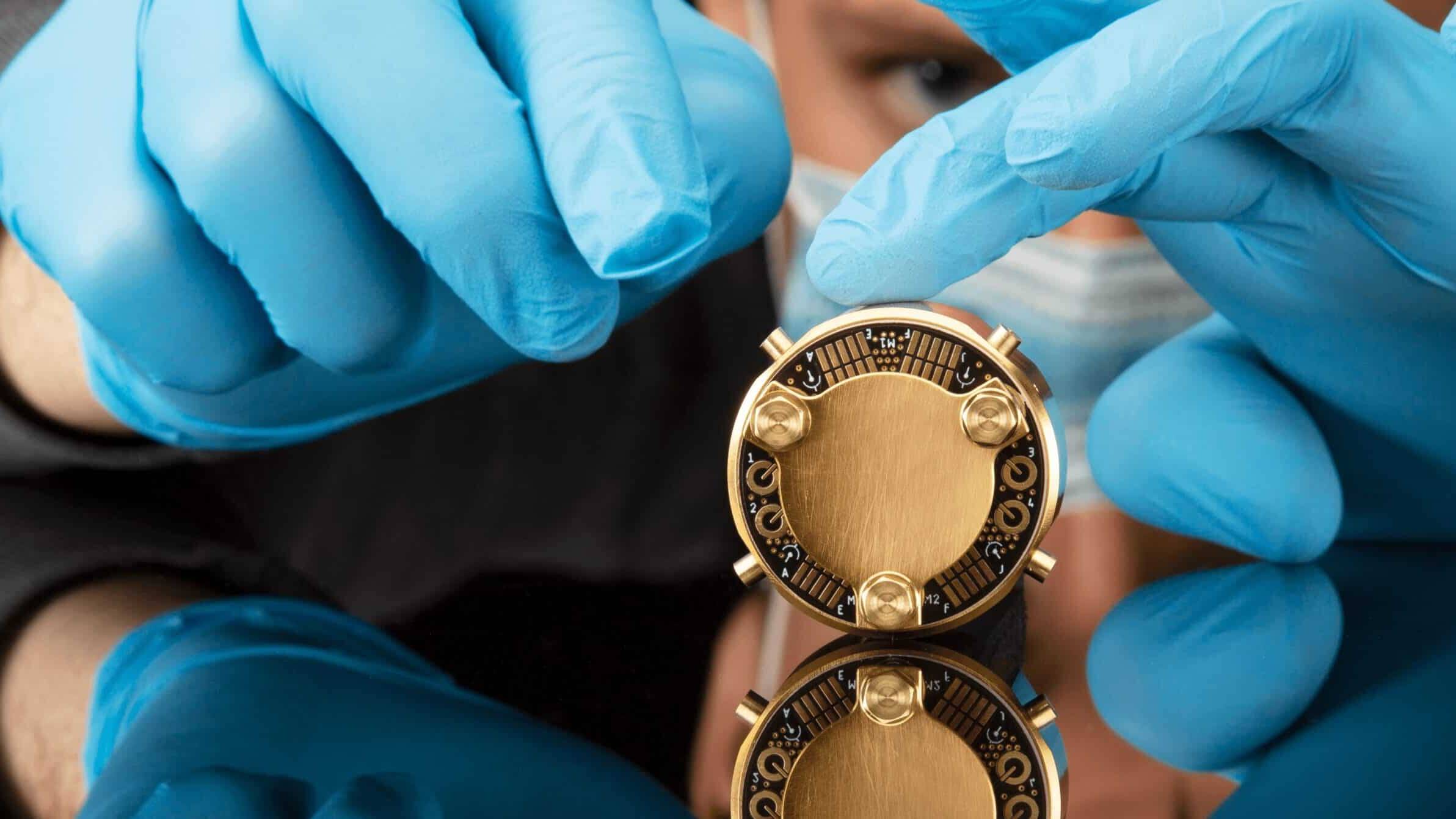Modern smallsats, spacecraft with a mass of less than 500kg, were initially developed in the 1980s, but were primarily launched by universities for research applications. It’s only in the last decade that their popularity skyrocketed when companies looked for cheaper and faster ways to get to space. Nowadays, data from smallsats are being used in every industry from energy and agriculture to government and communications.
The reason behind this wide adoption is the cost-effectiveness of smallsats. It traditionally takes several years and millions of euros to develop and test larger-size satellites. Due to their size, smallsats can be manufactured using more common off-the-shelf equipment and parts which allows organizations to construct 20 to 40 satellites in a single year. Once in orbit, software updates can be applied to smallsats as well, improving their capabilities.
Between 2021 and 2030, an estimated 13,912 small satellites are expected to be launched. This rising number of smallsat launches has put a strain on existing launch capabilities. Sharing rides with larger satellites or multiple other projects, smallsats are often not the priority and lack the ability to aim for precise orbits. Mega-constellations such as Starlink and OneWeb also require a large number of launches every year and the possibility to quickly replace damaged satellites. As a consequence, there has been a push for more flexible lower-cost launch alternatives.
New solutions include microlaunchers specifically built for smallsat launches which offer easier, more reliable scheduling and shorter waiting times. Microlauncher designs often include reusable rocket parts and use new additive manufacturing techniques such as 3D printing to create rocket launcher engines. Environmental concerns over emissions caused by launches have led some companies to develop biofuel rockets in an effort to make launch services more sustainable.
From commercial applications and research to students and countries without space programs building and launching their own projects, the development of new launch capabilities and small satellites have democratized access to space and have had a profound impact on the way we use satellite technology today. But this has been a process 70 years in the making.
The beginnings of smallsats
The very first satellites, launched in the 1950s and 1960s, were all smallsats. Sputnik, the first artificial satellite, launched by the former Soviet Union on 4 October 1957, weighed 83.6 kg and was 58 cm in diameter, roughly the size of a beach ball. Early satellites were largely designed to prove that such technology could truly function in outer space and were limited to launch vehicle capacity at the time.
Due to their rudimentary technology, these early satellites required sophisticated ground stations with huge 30-meter steerable aperture antennas to receive and transmit their signals. These stations were expensive to build and required 50-60 people to run them nonstop. As a consequence, satellite development underwent a process of technological inversion. Satellites gradually became more complex and massive while ground antennas became smaller and simpler.
It wasn’t until the 1980s that the idea of small satellites was revisited. It all started in the late 1970s when a group of engineering researchers at the University of Surrey, led by Martin Sweeting, decided to experiment by creating a satellite using commercial off-the-shelf components. Their first satellite, UoSat-1, was launched in 1981 on board a DELTA rocket as a secondary payload underneath a NASA scientific satellite. UoSat-1 was the first modern re-programmable small satellite and effectively proved that small and inexpensive microsatellites could be built rapidly to perform successful and sophisticated missions. UoSat-1 also outlived its planned three-year life by more than five years.
The Surrey Satellite Technology Ltd (SSTL) was created in 1985 to transfer the results of this research into a commercial enterprise. SSTL went on to build and launch over 70 satellites for customers and partners in 22 countries and was acquired by Airbus in 2009.
However, in the 1980s, the big players in the space industry involved in major governmental and military projects or commercial satellite activities were still focusing on designing, building and launching large satellites. Weighing tons, commercial satellites at the time were primarily used for telecommunication, broadcasting, and networking services and were deployed in a geostationary orbit.
A false start
In the late 1980s and 1990s, several new ideas began appearing around the potential use of satellites for global mobile communications satellite services. Most of these new concepts involved the idea of deploying low Earth orbit (LEO) constellations. The most well-known of these initiatives was the Iridium satellite network which was spearheaded by Motorola. Its claim to fame however is a less fortunate one than that of SSTL.
Planned in the mid-1980s, the system was made up of 66 active satellites and their spares, each weighing around 640 kg. The constellation was deployed between 1997 and 2002 on a diverse fleet of rockets that included launch vehicles from the United States, Russia and China. The services Iridium offered were less impressive: global communications from a brick-size $3,000 phone at charges of $6 to $30 a minute. Faced with competition from the booming cellular phone industry, Iridium failed in its first year as a business and filed for the largest bankruptcy in US history at the time.
The initiative cost Motorola $5 billion and the company nearly de-orbited the constellation. Fortunately, championed by Dan Colussy, a retired veteran aviation executive and small investor in Iridium, the constellation found a second life. It was bought out and repurposed for use in remote areas not covered by other satellite networks where it proved useful for explorers, reporters and, more crucially, the world’s military.
Other constellation initiatives developed and launched around the same time, such as Globalstar, Orbcomm mobile communications systems and the broadband Teledesic system suffered similar fates. Much of their downfall was linked to an underestimation of the costs it would take the companies to build and deploy their satellites. From a technical point of view, these initiatives were not failures, but rather lacked the right business vision. The proof is simple: most of the constellations are still operational and other more viable commercial applications have been found for them.

Invest in Startups
As one of Europe’s most active venture capital investors, we grant qualified private investors access to top-tier European startups. With investments starting at EUR/CHF 10’000, you can build your own tailored portfolio over time and diversify across stages and sectors.
The Silicon Valley approach
The New Space era was ushered in by the disruptive influence of entrepreneurs and the world of cyberspace. It was permeated by the so-called “Silicon Valley approach” that questioned the old ways of doing things and sought innovations and business models that would reinvent the way the space industry operated. This new way of thinking resulted in several prominent success stories that showed that the space industry could produce commercially lucrative companies.
In 2009, four students from Stanford University’s School of Engineering designed a 100 kg, 30 cm cube-shaped small satellite using off-the-shelf components. Instead of expensive flight-ready equipment, their concept relied on commercially available electronic and automotive parts, as well as open-source software, including image processing routines developed in the medical industry.
Deciding to put their designs into practice, the students created the Skybox Imaging startup that raised a total of US$91 million of private capital from several prominent Silicon Valley venture firms. Their first satellite, SkySat-1, was launched in 2013 on a Dnepr rocket rideshare from Dombarovsky Air Base in Russia while their second, identical satellite, SkySat-2, was launched as a secondary payload on a Soyuz-2-1b Fregat rocket in 2014 from Baikonur, Kazakhstan.
After successfully launching their first two satellites, Skybox Imaging was bought out by Google for $500 million. Google later sold the company, renamed Terra Bella for copyright reasons, to Planet for an undisclosed sum and a long-term service contract to provide imaging data to Google at an advantageous price.
Planet itself is another Silicon Valley success. Its founders, three former NASA scientists, believed that miniaturization and new small-scale components made it possible to use small satellites for remote sensing. Their Dove satellites weighed less than 6 kg and were roughly the size of three lined up 10 cm cubes. After securing financial backing from Silicon Valley venture firms, Planet successfully launched its first satellites in 2013. Dove-1 was launched from Wallops Island, US as a secondary payload on the maiden flight of the Antares-110 rocket while Dove-2 was launched as a secondary payload on a Soyuz-2.1b rocket from Baikonur, Kazakhstan.
The Dove model was improved with each successive batch of launches. Since 2013, Planet has launched 462 satellites and currently has 200 satellites in orbit, including their Dove constellation and the SkySat satellites they inherited through their acquisition of Skybox Imaging.
Today, Planet is a publicly traded company and is one of the most prominent players in the remote sensing industry. They serve more than 34,000 users, 700 customers, and 200 partners. Their geospatial data is being used in agriculture, government, and commercial mapping, and is growing in new markets such as insurance, commodities, and finance.
Planet and SkyBox Imaging reinvented the world of remote sensing by building small satellites that were ten times cheaper than those built by commercial enterprises until then. They also proved that there was a customer base for satellite imagery outside the limited scope of government clients.
The democratization of space
Currently, the world’s most popular smallsat is the cubesat: a 10 cm cube with a mass limit of 1 kilogram. The standard was created by two aerospace engineers, Jordi Puig-Suari from California Polytechnic State University and Bob Twiggs from Stanford University in 1999 while they were trying to find ways of getting more student projects into space.
Today, programs such as NASA’s CubeSat Initiative and ESA’s Fly your satellite! encourage university students and researchers to design and build their own cubesat experiments and offer them a free ride to space. All these initiatives have created a widespread interest in space experimentation. Standardized cubesat frames and other key components can now even be purchased online, making cubesat projects easier to build than ever.
Their cheap cost has also made it possible for countries without a well developed space industry to launch their own, sometimes first, satellites. The Central American Association for Aeronautics and Space (ACAE) crowdfunded Costa Rica’s first satellite, Irazú, on Kickstarter and launched the cubesat onboard a Falcon 9 rocket as a secondary payload with the help of NASA in 2018. Ethiopia developed its first satellite, the 64-kg smallsat ETRSS-1 and launched it in 2019 as a secondary payload onboard a Long March 4B rocket from the Taiyuan Satellite Launch Center in China.
A ride to space
Parallel to the Silicon Valley approach to the design and manufacture of small satellites also came a new way of thinking about how to create more efficient launch vehicles and reusable rocket systems. At the moment, companies looking to launch small satellites have two main options. They either piggy-back as a secondary payload on the launch of a larger satellite or they share a ride with numerous smallsats from multiple manufacturers in one payload carrier.

These solutions are offered primarily by a handful of big players like SpaceX (US), ArianeSpace (Europe) and Virgin Orbit (US), who frequently launch a variety of rockets into orbit. However, these companies mainly focus on delivering their own, often large, satellites into space, and occasionally have room left to piggyback smallsats. Russia, with its Soyuz rockets, was also a key player in the launch of European and American small satellites, but the current political climate has made the continued use of its capabilities unlikely.
When using piggyback and rideshare solutions, smallsat manufacturers are limited in their control of when and where they launch their products into orbit. This can lead to significant costly delays, pushed-back timelines and the risk of smallsats not reaching their desired orbit.
To respond to the growing demand for dedicated smallsat launches, around 150 microlauncher projects have been initiated, 50 of which have remained active. 25 of these were developed in China exclusively for the Chinese market. The US currently has two microlaunchers available while Europe has yet to successfully launch its own. However, there are several startups active in this space.
The most advanced of these is British startup Orbex which has developed a largely reusable rocket that can deliver 200kg of payload to orbit and is powered by 100% renewable fuel.
“To deliver the performance and environmental sustainability we wanted from a 21st century rocket we had to innovate in a wide number of areas – low-carbon fuels, fully 3D-printed rocket engines, very lightweight fuel tanks, and a novel, low-mass reusability technology,” said Orbex CEO Chris Larmour after the unveiling of the company’s first full-scale prototype of their Prime orbital space rocket in May 2022.
Orbex has also built its own dedicated launch pad in Kinloss, Scotland. Its first launch is expected to take place in 2023.
Written by
WITH US, YOU CANCO-INVEST IN DEEP TECH STARTUPS

Verve's investor network
With annual investments of EUR 60-70 mio, we belong to the top 10% most active startup investors in Europe. We therefore get you into competitive financing rounds alongside other world-class venture capital funds.
We empower you to build your individual portfolio.
More News
03.09.2021
Reasons to invest in space companies
The launch of the first European thematic equity fund dedicated to new space companies is a testimony to the growing investor appetite for this topic. Verve Ventures has nurtured one, Astrocast, since 2017. In this interview, fund manager Rolando Grandi explains what characterizes the new space industry, why it is growing fast, and what its prospects are.
02.03.2021
An introduction to quantum sensors and the investment opportunities
in this space
Quantum computing and its supremacy over the classical computer capture the imagination of people all over the world. Less known, but no less fascinating is the practical application of quantum phenomena to build sensors that can measure what is otherwise impossible. Scanning a single cell, looking around a corner, hearing a mouse eat in a grain silo, all of this becomes possible thanks to quantum sensors.
07.10.2020
Trends in the drone industry
Investments in drone startups have gone up considerably in the last few years and reached USD 1.2 billion in 2019. Venture capital firms contributed two thirds of that sum. Why does investiere invest in drone startups and what are current trends? The drone market experts Kay Wackwitz and Hendrik Boedecker exchange ideas with our Investment Manager Romeo Bütler.
Startups,Innovation andVenture Capital
Sign up to receive our weekly newsletter and learn about investing in technologies that are changing the world.




